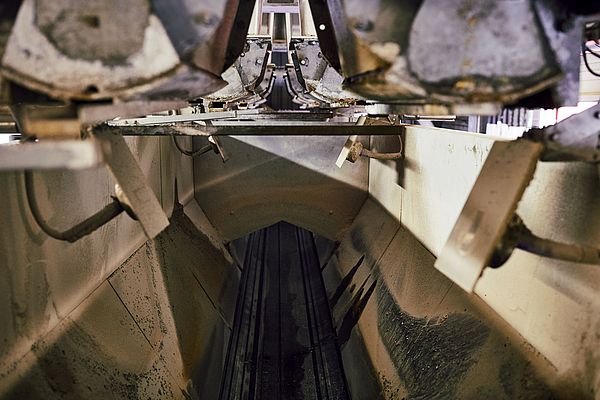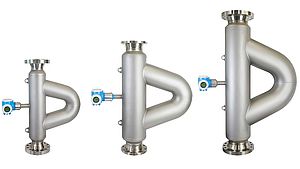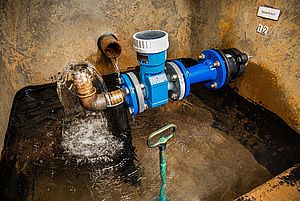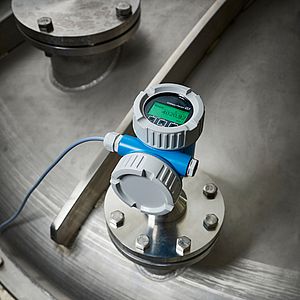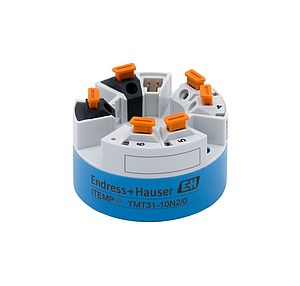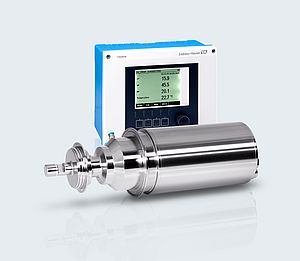There are numerous reasons for using moisture measurement instruments. Because the water content in products can be a decisive factor for product quality and process reliability, it’s important to draw conclusions regarding moisture in the materials. This can range from extremely small amounts of water in dry products in the food industry to very high levels such as in drilling mud in the mining industry. In other words, it all boils down to the exact dosage of water in the process. Think of it in terms of baking a cake. The success of a recipe rides on adding the precise amount of each ingredient.
Laboratory instruments are typically employed for drawing conclusions regarding water content. To do that, dry and wet samples are weighed and compared. The results can then be used to draw conclusions about the water content. Although this method is precise and simple to use, it has several disadvantages. One of these is that the process sample is merely a representative snapshot. Drying can take from 30 minutes to 24 hours depending on the moisture content and the quantity and type of the sample.
Meanwhile, the process continues to run and by the time the measurement result is available, it’s already outdated. In addition, manual sampling is laborious and costly.
Substitutes for time-consuming random sampling
With the Solitrend family of products, Endress+Hauser has created a solution for continuous, process-based moisture measurements. The sensors, which are based on TDR technology, precisely determine the water content in bulk solids based on the runtime of a radar impulse across a ceramic measurement cell, using the physical effect of the increasing dielectric constant as it relates to increased water content.
The moisture sensors are installed directly in the bulk solid stream with the help of a bracket to ensure fast and reliable measurements. In the primaries industry, for example, material is often conveyed out in the open. In these environments, sensors are mounted directly under silo hatches, under the conveyer heads, where they can measure in free fall or from above where they are installed on the conveyers. This ensures that the sensor has a proper flow around it and can maintain direct contact with the material. The measurement values can be read out with an optional display or a control system (SPS). It’s also possible to enter threshold values into the control system and trigger alarms when they are reached. This allows the water dosage to be
controlled during the process.
Minimal wear, no calibration
Compared to other measurement methods, TDR enables a high degree of accuracy and deep penetration of the material, and it is not impacted by the grain size or contaminants. Thanks to their robust construction and the use of high-quality materials, the sensors are characterized by resistance to wear and thus a long service life. To measure highly abrasive materials, such as coarse bulk solids, a hard metal version is available. The high-temperature version of the sensor is suitable for process temperatures of up to 120 degrees Celsius and can thus be employed directly behind the dryer. Because calibration curves for a variety of aggregate materials (sand, gravel, crushed stone) are delivered with the sensor, commissioning of the instrument is straight-forward. Once the instrument has been initially commissioned, regular recalibration in production is not necessary.
Flelxible and reliable use for any application
Solitrend sensors are available in different versions for various bulk densities, including low density (animal feed, grains, plastic granulate), very low density and low water content (sawdust, pellets) or even conductive bulk goods and slurry (fresh cement, sewage sludge). All versions feature simple installation and operation, even in demanding applications, plus an integrated transmitter for streamlined plant integration. Solitrend instruments eliminate the need for manual sampling and laboratory analysis, thus allowing plant operators to optimize process costs, improve product quality and reduce energy needs.
THE TDR MEASUREMENT PRINCIPLE
Guided radar (TDR measurement principle) propagates at nearly the speed of light. The sensor measures layer for layer in the form of slices, perpendicular to the surface of the sensor, similar to how computer tomography works. That means the sensor has a precisely defined measurement field and can perform error-free measurements, even when there are fluctuating fines or varying grain sizes.
Since the measurement is traverse to the surface of the sensor, the mechanical condition of the sensor surface is not a disturbance variable. That means recurring and unavoidable wear of the sensor does not lead to falsification of the measurement value. The defined measurement field furthermore enables precise measurements with applications in which the material coverage is low or fluctuates. This provides a high degree of flexibility in mechanically integrating the sensor into the application.



